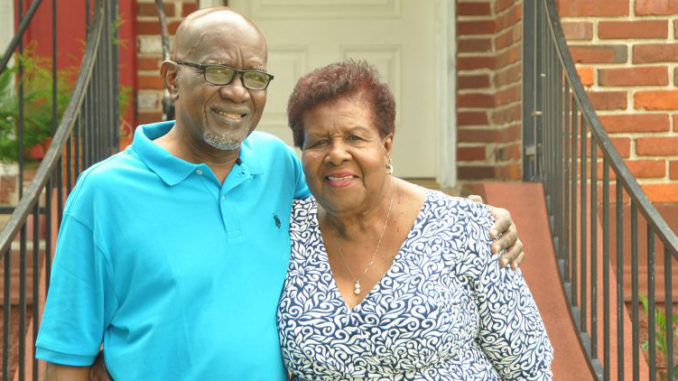
By Dr. Kevin Williams, Chief Medical Officer for Rare Disease at Pfizer
The “Ask Dr. Kevin” series is brought to you by Pfizer Rare Disease in collaboration with the National Newspaper Publishers Association (NNPA) to increase understanding of hereditary transthyretin amyloid cardiomyopathy (ATTR-CM), and the risk it poses to African Americans.
Being diagnosed with a rare disease can be overwhelming, and it can be just as difficult if a loved one receives a diagnosis. In the case of ATTR-CM, a life-threatening, underdiagnosed disease that’s associated with heart failure, it’s important to take it one day at a time.[1],[2],[3] Learning more about the condition, how to manage it and where to find support are some of the best methods to navigate an ATTR-CM diagnosis.
There are two sub-types of ATTR-CM, wild-type and hereditary. Wild-type ATTR-CM is thought to be the most common form of ATTR-CM, is mostly associated with men over the age of 60 and is not caused by a mutation in a person’s genes. Most wild-type patients are White. Hereditary ATTR-CM is inherited from a relative and is a genetic mutation, affecting both men and women. In the United States, the most common genetic mutation associated with hereditary ATTR-CM, V122I, is found almost exclusively in people of African descent with a prevalence of roughly 3 percent, although people who have the mutation may never develop symptoms of the disease. Symptom onset can occur in people as early as their 50s or 60s.1,[4],[5]
While every ATTR-CM patient journey is unique, it helps to have a support system in place while navigating life with the disease. Having a caregiver to lean on for assistance can provide much needed peace of mind.
The Role of a Caregiver
A caregiver may play a critical role throughout every stage of the ATTR-CM journey – from helping to identify symptoms early on to diagnosis to daily management following a confirmed diagnosis. Whether it’s a spouse, partner, child, grandchild or trusted friend, an advocate who can provide physical and emotional support can be a significant benefit to a patient facing life with ATTR-CM.
In the case of hereditary ATTR-CM patients, most are assessed generally by a primary care physician (PCP) before being referred to a cardiologist for assessing unresolved specific symptoms related to the disease. For some, this can take a longer period of time and delay diagnosis. A caretaker or family member who is available to advocate on behalf of the patient and ask their PCP more questions about what they are experiencing may help speed up a referral.
When Randy, who is living with the hereditary form of ATTR-CM, was first diagnosed, his wife Priscilla was surprised because he had always been very healthy and active. She had many questions about how the condition might affect him and their life together, but it was Randy who opened up to Priscilla to talk about how he was feeling and the help he needed to manage his hereditary ATTR-CM. “My wife is my only caregiver. With my disease, I am not able to do much around the house, so I rely on her. She insists that I take medication on time, she keeps me on a routine.”
Caregiving is Not a “One-Size-Fits-All” Approach
Caregivers play an important part in helping navigate the “new normal” of ATTR-CM, and their responsibilities can vary based on the unique needs of the person who is living with the condition. While some caregivers play a more supportive role, checking in and listening when a patient wants to talk about how they are feeling, others need to take a more hands-on approach and can help with maintaining medical records, managing treatment and accompanying the patient to doctor visits.
Many patients find bringing a caregiver to their doctor appointments is very helpful, as he or she can contribute during the visit by discussing symptoms, asking questions, taking notes and communicating worries that the patient may have previously expressed to them.
Communicating with a Caregiver
A caregiver can help only as much as the patient will let them, which is why it’s essential to have an open and honest dialogue about how ATTR-CM symptoms affect daily activities and one’s physical and emotional well-being. By helping a caregiver understand what they’re going through, the patient can empower the caregiver to provide them with the best possible care.
This also includes communicating personal boundaries. Caregivers need to know when a patient needs help with certain activities and when they would prefer to be and have the ability to be more independent. Similarly, caregivers must carve out time to recharge and practice self-care, even when others may be depending on them. In both cases, communication is key to ensuring that the patient-caregiver relationship is one built on mutual trust and support.
If you’d like to learn more about hereditary ATTR-CM, including common signs and symptoms, visit www.YourHeartsMessage.com.


Be the first to comment